World
Eyewitness to fighting Hamas terrorists in Gaza's deadly Netzarim Corridor: 'The challenges are constant'
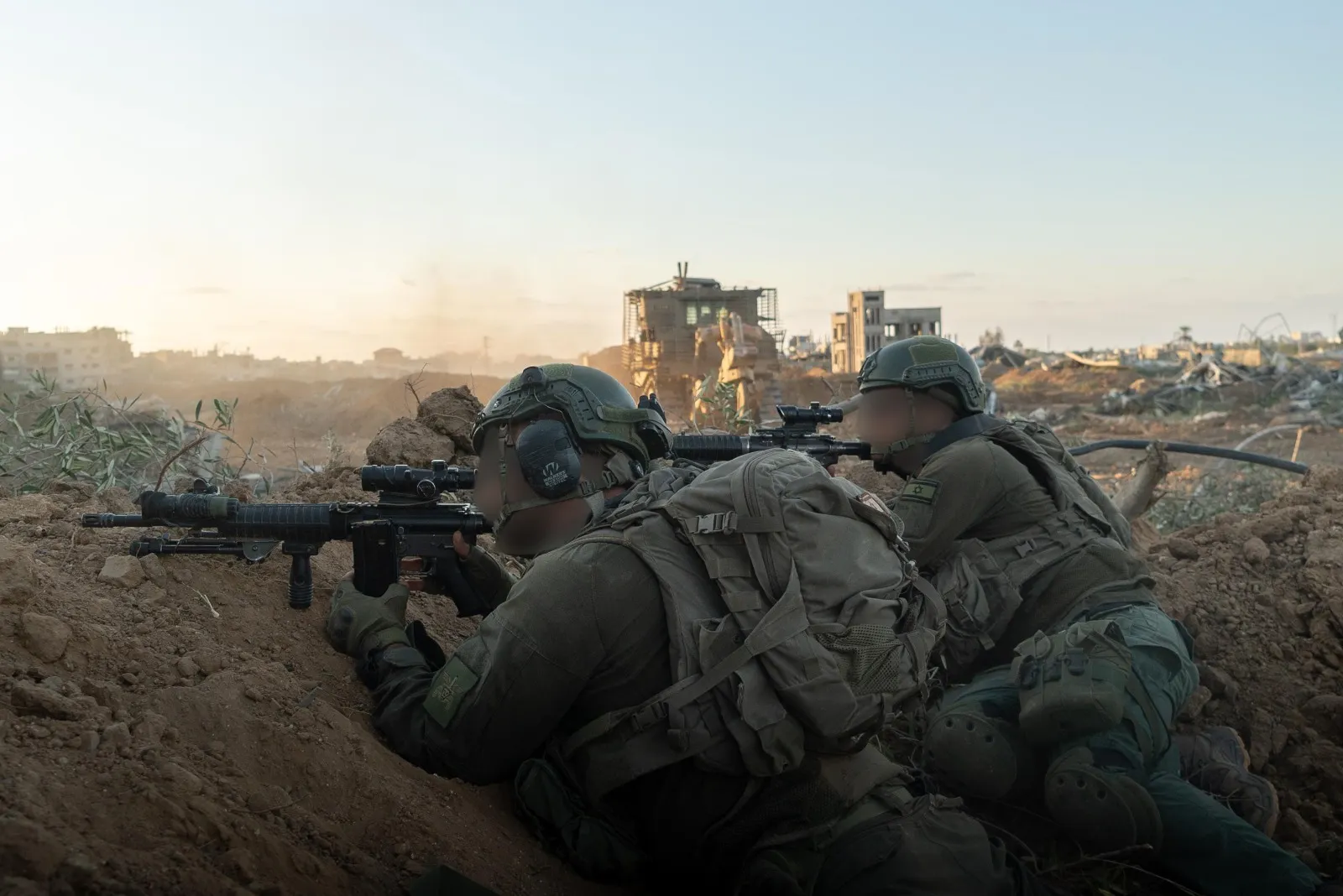
Cease-fire talks continued last week as Israel, the U.S., Egypt and Qatar looked to find a solution to free the hostages and stop the war, yet life in the trenches goes on. Fox News Digital spoke with an IDF colonel based in the explosive Netzarim corridor in Gaza.
The Netzarim Corridor splits Gaza in half, and it’s here where IDF Col. Amir Ofri organizes his troops in a fight against terrorists. The atmosphere is tense, he says, and describes a recent incident where a Gazan woman stumbled toward his unit checkpoint, her movements erratic, suggesting disorientation. As she approached, he recalls her repeatedly glancing over her shoulder, seemingly reluctant to come closer. He says it was clear to him that she was under the influence of drugs.
“We try to assess whether she poses a threat or is armed,” Ofri tells Fox News Digital. But as the woman gets closer, it becomes obvious she is being directed by someone behind her. The decision is made to send her back, but as they do, his soldiers identify Hamas spotters in a nearby school in the refugee camp of Al-Bureij. As the soldiers move closer, terrorists fire at them from the windows, unleashing anti-tank missiles and explosives.
URBAN WARFARE EXPERT SAYS ISRAELI MILITARY TAKING UNPRECEDENTED STEPS TO PROTECT GAZA CIVILIANS
Hamas terrorists of the al-Qassam Brigades take part in a military parade to mark the anniversary of the 2014 war with Israel, in the central Gaza Strip on July 19, 2023. (Mahmud Hams/AFP via Getty Images)
“Women and children, Hamas exploits the population in extreme and cruel ways,” he says during a Zoom interview. “I’ve never seen anything like it.”
On the morning that Hamas attacked Israeli communities and settlements close to Gaza on Oct. 7, 2023, Col. Ofri was with his family in the north to celebrate his 46th birthday. A seasoned officer, he immediately reported for duty to a base in the Negev Desert a little more than 30 kilometers from the border. By the next day, his reserve armored brigade was positioned at the Gaza fence, ready for whatever lay ahead. “We were the first to enter Gaza on Oct. 21,” he recalls.
The responsibility he bears weighs heavily on him. “It’s been over nine months since I’ve seen my wife and children for more than a fleeting moment,” he says. Before the war, he directed a company with factories in Israel, Spain and the U.S. “My partner in Oklahoma was one of the first to call me after Oct. 7. He said he hoped the U.S. would send everything it could to help us.”

IDF Col. Amir Ofri with troops by the Nitzarim Corridor that splits Gaza in half. (Photo: IDF Spokesman’s Unit.) (IDF Spokesman’s Unit)
His mission along the Netzarim Corridor, which serves both as a lifeline for humanitarian aid and a strategic position in the ongoing conflict, is critical. “Our job is to keep the route open for humanitarian convoys,” Ofri explains. “Every day presents unique challenges and risks.”
The Netzarim Corridor is pivotal in the Gaza Strip. With the onset of the ground campaign, IDF forces established a four-kilometer wide corridor to split Gaza in two, from its eastern border to the Mediterranean Sea. Key towns sit along the route – Jabalia and Zeitoun to the north, and Al-Bureij and Nuseirat to the south.
The other side, Hamas, doesn’t account for the population; they exploit them. The terrorists we eliminate often wear civilian clothes. Some are disguised as women.”
Fifteen years after Gaza was last under Israel’s military control, this strategic route is again being held by the IDF. The majority of Gaza’s population has been evacuated south, allowing the IDF to maintain nearly full control over significant parts of the Strip. However, it has also become one of the most dangerous areas in the conflict, with Israeli soldiers killed and injured since operations began.
WORLD, UN SIGNAL NO EXIT FOR CIVILIANS CAUGHT UP IN GAZA WAR: ‘POLITICALLY TOXIC’

An IDF tank rolls through the Netzarim Corridor in Gaza. (Photo: IDF Spokesman’s Unit.) (IDF Spokesman’s Unit)
“I don’t like this mission at all,” he admits. In the early stages of the war, “when the brigade was on the attack, we were more efficient and lethal. In the Netzarim Corridor, the challenges are constant,” he says.
Despite these difficulties, Ofri’s brigade has operated with minimal casualties. “Eight fighters from my brigade have fallen since the fighting began,” he says somberly. “But we haven’t lost any soldiers while securing the corridor, and that’s the result of learning from others’ experiences.”
The humanitarian crisis in Gaza has dominated media coverage since the conflict escalated, leading to significant criticism of Israel from the U.N. and various countries, including the U.S. Many organizations have highlighted the deteriorating situation for civilians, emphasizing that while they face hardships, the military also has a responsibility to minimize harm.

A map showing the Netzarim and Philadelphi Corridors in Gaza. (Reuters)
“They’re living in tents under difficult conditions, but they lack neither food nor water,” he says. “Every day, we transfer about 30 trucks filled with food, water, tents and medicine. The other side, Hamas, doesn’t account for the population; they exploit them. The terrorists we eliminate often wear civilian clothes. Some are disguised as women.”
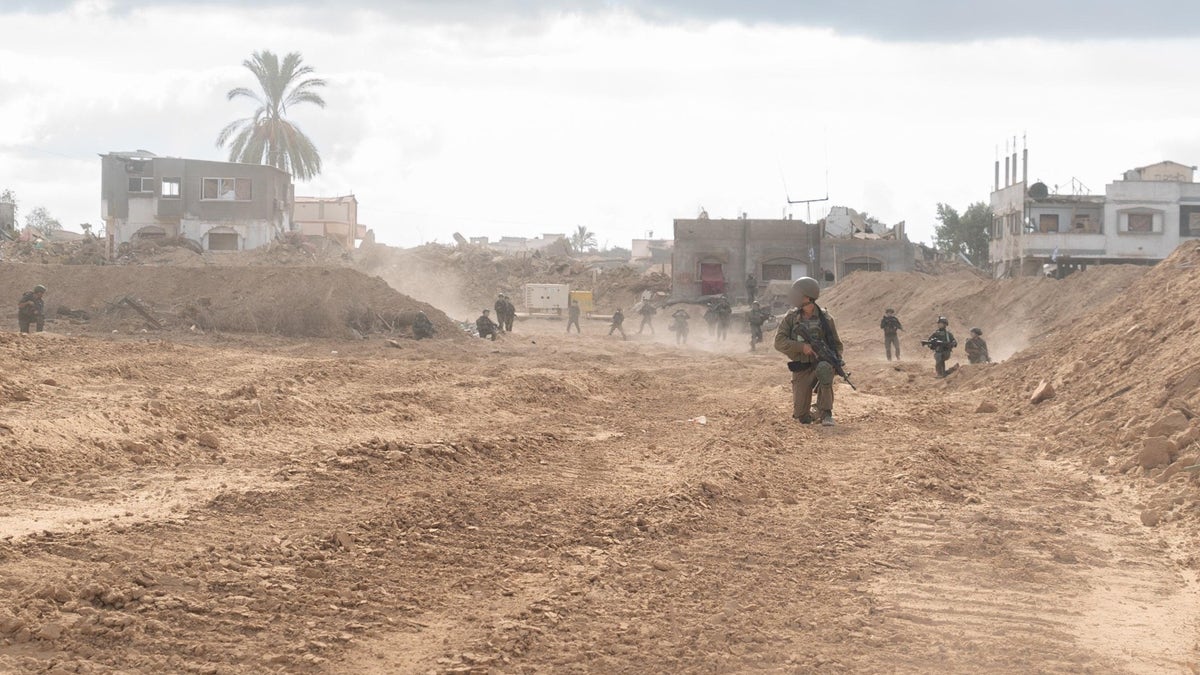
IDF soldiers fighting in the Netzarim Corridor in Gaza. (Photo: IDF Spokesman’s Unit.) (IDF Spokesman’s Unit)
One evening as a convoy approached, an unplanned vehicle got into the line. “When we stopped the convoy, terrorists emerged from that vehicle – one dressed as a woman – and they opened fire. We eliminated two of them, while two others fled back to the vehicle,” Ofri says.
“All the convoys we needed to pass did pass, and then we saw Hamas setting up roadblocks, stopping and looting them,” he says, elaborating on the complicated dynamics on the ground. “Hamas targets specific trucks rather than looting indiscriminately. We observed them unloading supplies quickly, moving items into warehouses. We even saw armed Hamas vehicles leaving those locations, with guards at the entrances.”
DATA USED FOR GAZA FAMINE CLAIMS CHANGING AS EXPERT CAUTIONS ‘NO ONE SEEMS TO BE TRYING TO EXPLAIN WHY’
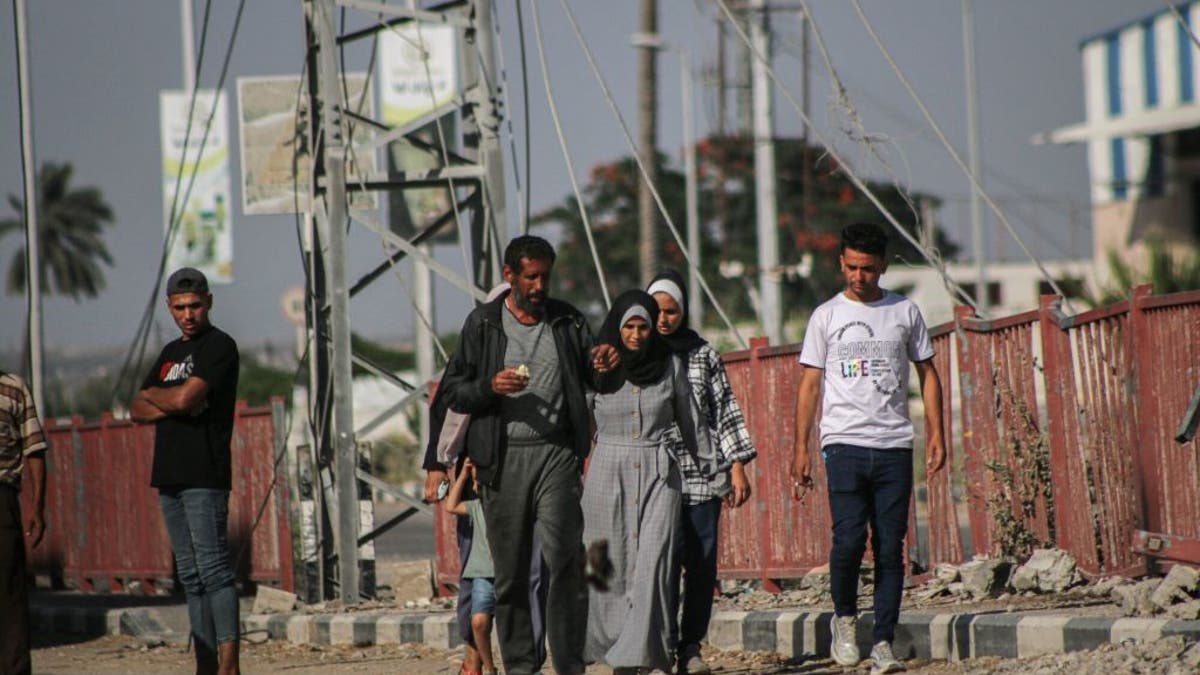
Displaced Palestinians flee Gaza City through an Israeli army corridor in Netzarim to Salah al-Din Street in central Gaza, on Wednesday, July 10, 2024. (Ahmad Salem/Bloomberg via Getty Images)
When it comes to using civilians in the conflict, he disputes a recent reports claiming that the IDF uses Gazan civilians as human shields in operations against Hamas, at least when it comes to his brigade. “I’ve been in combat for a year; we don’t use civilians as human shields,” he says. “Hamas does. As someone who approves all operations for the brigade, I state clearly that no fire is intentionally directed at women or children. Not a single shell or airstrike is executed without assessing potential collateral damage.”
The Hamas-controlled Gaza Health Ministry claims more than 42,000 people have been killed in Gaza. Israel says the number is lower, but will not publish its assessment. Hamas doesn’t differentiate between civilians and terrorists in its calculations.
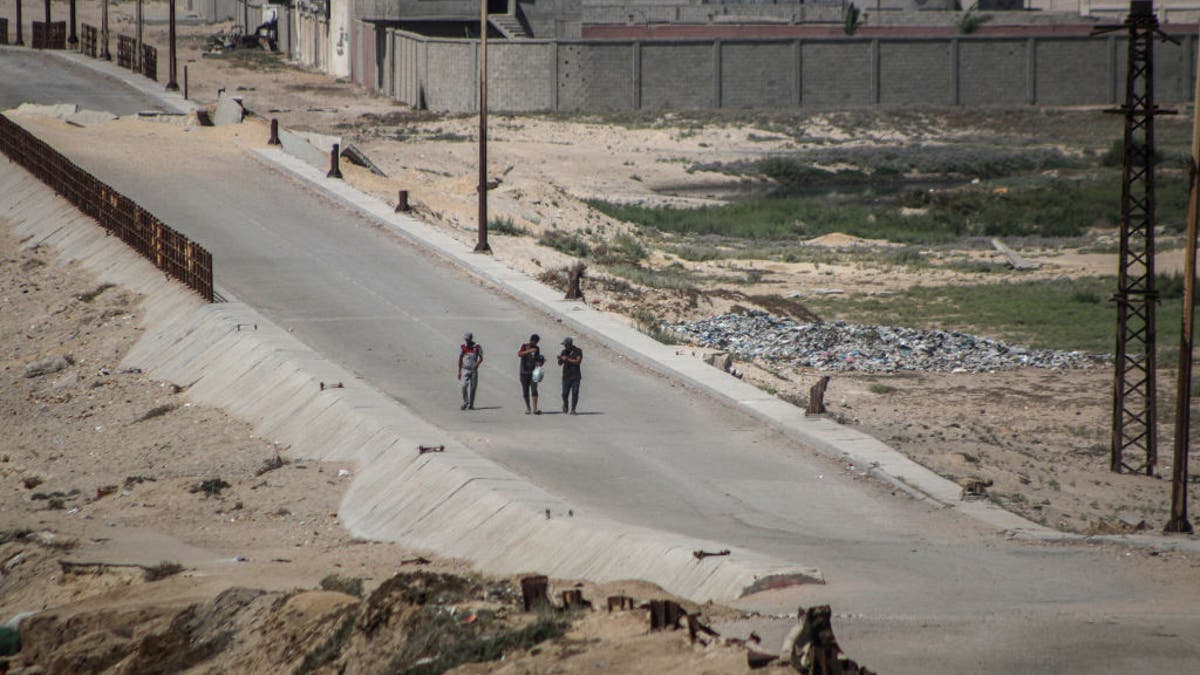
Displaced Palestinians fleeing Gaza City walk along the Israeli army corridor in the Netzarim area in central Gaza, on July 10, 2024. (Ahmad Salem/Bloomberg via Getty Images)
“The problem lies in Hamas’s cynical use of the population,” Ofri says. He blames the terror organization for the loss of so many civilian lives. “We witnessed this during the recent Iranian attack. As soon as the Iranian assault began, on October 1, Hamas operatives attacked us. We were on the southern side of the corridor when they used short-range mortars to exploit the situation, pushing civilians toward our position. They forced people out of refugee camps, creating a dangerous environment as they told them to move closer to our forces,” he says.

IDF soldiers fighting in the Netzarim Corridor in Gaza. (IDF Spokesman’s Unit)
In October, Yahya Sinwar, Hamas’ leader and the mastermind behind the Oct. 7 attack, was killed by the IDF in Rafah, in southern Gaza. While many speculate that Sinwar’s death may lead to a turning point in the conflict, Ofri remains dubious. “In my view, he was just another terrorist who deserved to die. He’s just another obstacle in the effort to release hostages. I understand we won’t be able to free them through military means alone. However, I believe military pressure is the only strategy that has led to the first hostage deal.”
And it is because of the hostages that Israel must continue fighting, he says. “There are 101 hostages left, many of whom are relatives of our soldiers. Oct. 7 affected us all. I lost friends that day as well,” Ofri says. “That’s why we come together time and again, although it gets harder and harder. If you ask any soldier, they will tell you it’s about the hostages.”

World
Saudi executions rose sharply in 2024

World
Israel launches strikes in Yemen on Houthi military targets, IDF says
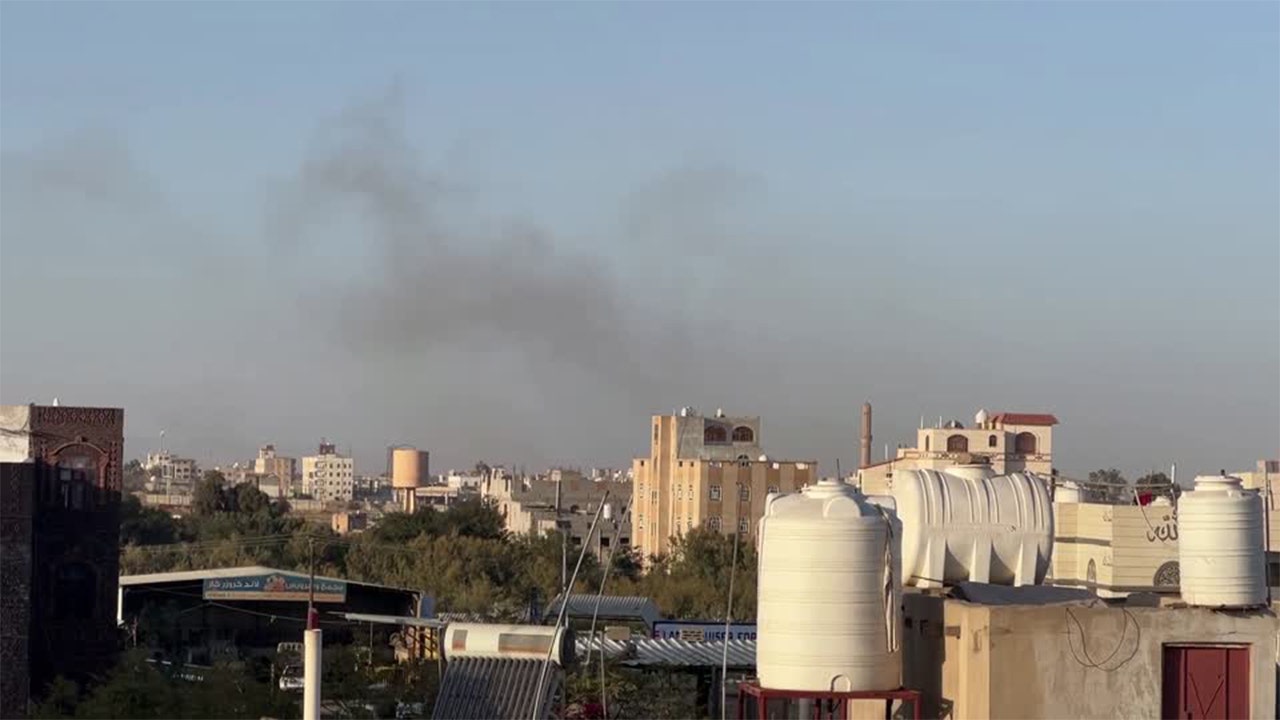
The Israeli military claimed responsibility for a series of airstrikes in Yemen on Thursday that hit Sana’a International Airport and other targets in the Houthi-controlled capital.
The Israel Defense Forces said the strikes targeted military infrastructure used by the Houthis to conduct acts of terrorism.
“The Houthi terrorist regime has repeatedly attacked the State of Israel and its citizens, including in UAV and surface-to-surface missile attacks on Israeli territory,” the IDF said in a statement.
“The targets that were struck by the IDF include military infrastructure used by the Houthi terrorist regime for its military activities in both the Sana’a International Airport and the Hezyaz and Ras Kanatib power stations. In addition, the IDF struck military infrastructure in the Al-Hudaydah, Salif, and Ras Kanatib ports on the western coast.”
PROJECTILE FROM YEMEN STRIKES NEAR TEL AVIV, INJURING MORE THAN A DOZEN: OFFICIALS
Black smoke rises near Sana’a International Airport in Yemen after reported Israeli airstrikes. (Reuters)
The strikes come days after Israel’s defense minister promised retaliation against Houthi leaders for missile strikes launched at Israel from Yemen.
Houthi rebels, who control most of northern Yemen, have fired upon Israel for more than a year to support Hamas terrorists at war with the Jewish State. The Houthis have attempted to enforce an embargo on Israel by launching missiles and drones at cargo vessels crossing the Red Sea – a major shipping lane for international trade.
US NAVY SHIPS REPEL ATTACK FROM HOUTHIS IN GULF OF ADEN
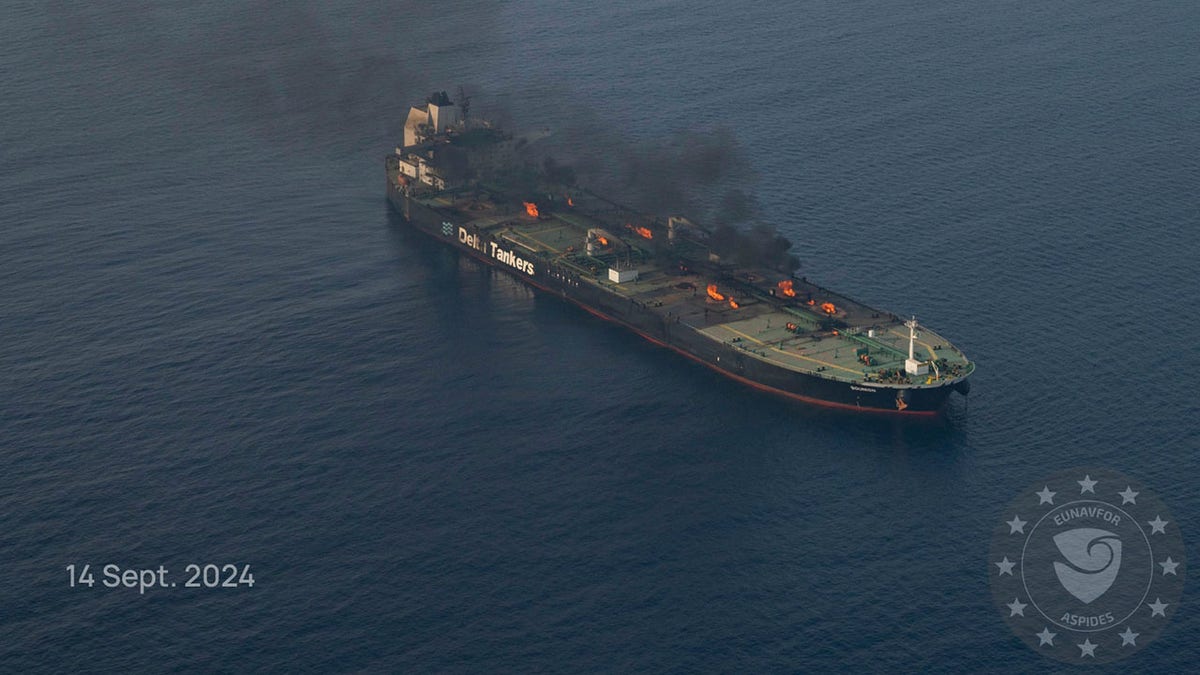
This photo released by the European Union’s Operation Aspides naval force shows the oil tanker Sounion burning in the Red Sea following a series of attacks by Yemen’s Houthi rebels, on Saturday Sept. 14, 2024. (European Union’s Operation Aspides via AP)
Overall, the Houthis have launched over 200 missiles and 170 drones at Israel since Hamas’s Oct. 7, 2023, massacre of 1,200 people. Since then, the Houthis have also attacked more than six dozen commercial vessels – particularly in the Bab-el-Mandeb, the southern maritime gateway to Egypt’s Suez Canal.
On Saturday, a projectile launched into Israel from Yemen struck Tel Aviv and caused mild injuries to 16 people, Israeli officials said. The incident was a rare occasion where Israeli defense systems failed to intercept an attack.
NETANYAHU WARNS HOUTHIS AMID CALLS FOR ISREAL TO WIPE OUT TERROR LEADERSHIP AS IT DID WITH NASRALLAH, SINWAR
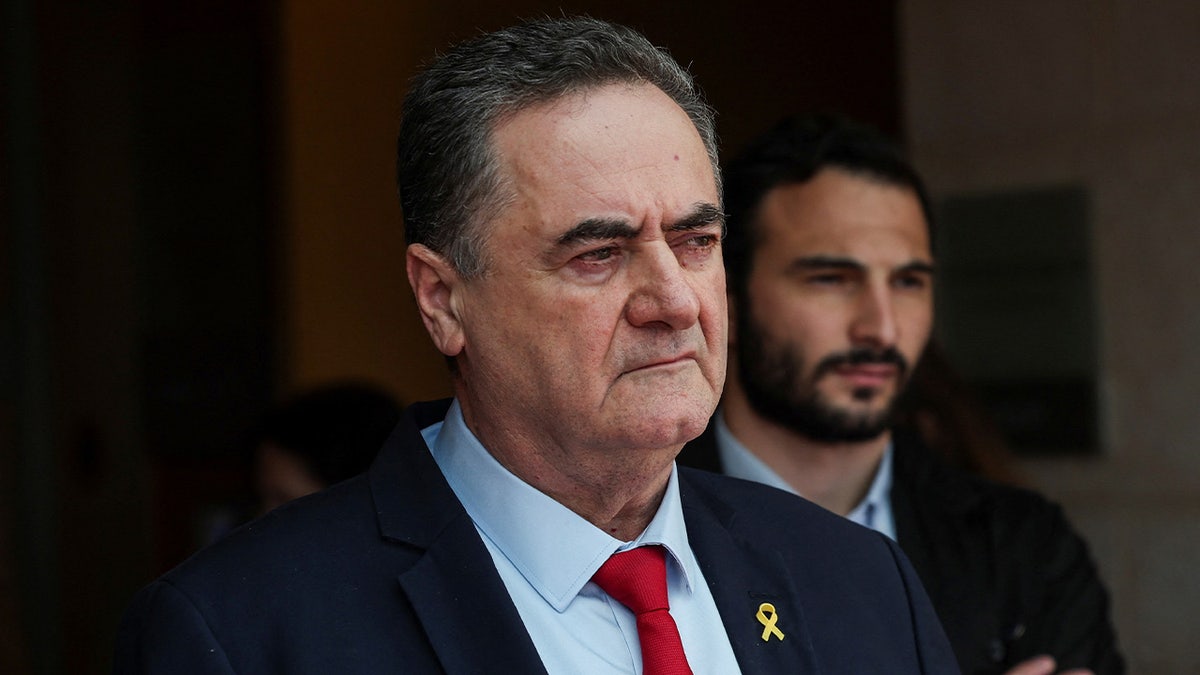
Israeli Defense Minister Israel Katz looks on, amid the ongoing conflict in Gaza between Israel and Hamas, in Jerusalem, November 7, 2024. (REUTERS/Ronen Zvulun)
Israel retaliated by striking multiple targets in areas of Yemen under Houthi control, including power plants in Sana’a.
Israeli leaders have vowed to eliminate Houthi leadership if the missile and drone attacks do not cease.
On Monday, Israeli Defense Minister Israel Katz said, “We will strike their strategic infrastructure and decapitate their leaders. Just as we did to [former Hamas chief Ismail] Haniyeh, Sinwar and Nasrallah, in Tehran, Gaza and Lebanon – we will do in Hodeidah and Sanaa.”
Prime Minister Benjamin Netanyahu has also urged Israelis to be “patient” and suggested that soon the military will ramp up its campaign against the Houthis.
“We will take forceful, determined and sophisticated action. Even if it takes time, the result will be the same,” he said. “Just as we have acted forcefully against the terror arms of Iran’s axis of evil, so too will we act against the Houthis.”
Fox News Digital’s Amelie Botbol contributed to this report.
World
Retraction of US-backed Gaza famine report draws anger, scrutiny

United States President Joe Biden’s administration is facing criticism after a US-backed report on famine in the Gaza Strip was retracted this week, drawing accusations of political interference and pro-Israel bias.
The report by the Famine Early Warning Systems Network (FEWS NET), which provides information about global food insecurity, had warned that a “famine scenario” was unfolding in northern Gaza during Israel’s war on the territory.
A note on the FEWS NET website, viewed by Al Jazeera on Thursday, said the group’s “December 23 Alert is under further review and is expected to be re-released with updated data and analysis in January”.
The Associated Press news agency, quoting unnamed American officials, said the US asked for the report to be retracted. FEWS NET is funded by the US Agency for International Development (USAID).
USAID did not immediately respond to Al Jazeera’s request for comment on Thursday afternoon.
Israel’s war in Gaza has killed more than 45,300 Palestinians since early October 2023 and plunged the coastal enclave into a dire humanitarian crisis as access to food, water, medicine and other supplies is severely curtailed.
An Israeli military offensive in the northern part of the territory has drawn particular concern in recent months with experts warning in November of a “strong likelihood” that famine was imminent in the area.
“Starvation, malnutrition, and excess mortality due to malnutrition and disease, are rapidly increasing” in northern Gaza, the Integrated Food Security Phase Classification said in an alert on November 8.
“Famine thresholds may have already been crossed or else will be in the near future,” it said.
The report
The FEWS NET report dated December 23 noted that Israel has maintained a “near-total blockade of humanitarian and commercial food supplies to besieged areas” of northern Gaza for nearly 80 days.
That includes the Jabalia, Beit Lahiya and Beit Hanoon areas, where rights groups have estimated thousands of Palestinians are trapped.
“Based on the collapse of the food system and worsening access to water, sanitation, and health services in these areas … it is highly likely that the food consumption and acute malnutrition thresholds for Famine (IPC Phase 5) have now been surpassed in North Gaza Governorate,” the FEWS NET report had said.
The network added that without a change to Israeli policy on food supplies entering the area, it expected that two to 15 people would die per day from January to March at least, which would surpass the “famine threshold”.
The report had spurred public criticism from the US ambassador to Israel, Jack Lew, who in a statement on Tuesday said FEWS NET had relied on “outdated and inaccurate” data.
Lew disputed the number of civilians believed to be living in northern Gaza, saying the civilian population was “in the range of 7,000-15,000, not 65,000-75,000 which is the basis of this report”.
“At a time when inaccurate information is causing confusion and accusations, it is irresponsible to issue a report like this,” he said.
— Ambassador Jack Lew (@USAmbIsrael) December 24, 2024
‘Bullying’
But Palestinian rights advocates condemned the ambassador’s remarks. Some accused Lew of appearing to welcome the forced displacement of Palestinians in Gaza.
“To reject a report on starvation in northern Gaza by appearing to boast about the fact that it has been successfully ethnically cleansed of its native population is just the latest example of Biden administration officials supporting, enabling and excusing Israel’s clear and open campaign of genocide in Gaza,” the Council on American-Islamic Relations said in a statement.
The group urged FEWS NET “not to submit to the bullying of genocide supporters”.
Huwaida Arraf, a prominent Palestinian American human rights lawyer, also criticised Lew for “relying on Israeli sources instead of your own experts”.
“Do you work for Israel or the American people, the overwhelming majority of whom disapprove of US support for this genocide?” she wrote on X.
Polls over the past year have shown a high percentage of Americans are opposed to Israel’s offensive in Gaza and want an end to the war.
A March survey by Gallup found that 55 percent of people in the US disapproved of Israel’s actions in Gaza while a more recent poll by the Pew Research Center, released in October, suggested about three in 10 Americans believed Israel’s military offensive is “going too far”.
While the Biden administration has said it is pushing for a ceasefire in Gaza, it has rebuffed calls to condition US assistance to Israel as a way to bring the war to an end.
Washington gives its ally at least $3.8bn in military assistance annually, and researchers at Brown University recently estimated that the Biden administration provided an additional $17.9bn to Israel since the start of the Gaza war.
The US is required under its own laws to suspend military assistance to a country if that country restricts the delivery of American-backed humanitarian aid, but Biden’s administration has so far refused to apply that rule to Israel.
“We, at this time, have not made an assessment that the Israelis are in violation of US law,” Department of State spokesperson Vedant Patel told reporters in November despite the reports of “imminent” famine in northern Gaza.
-
/cdn.vox-cdn.com/uploads/chorus_asset/file/24924653/236780_Google_AntiTrust_Trial_Custom_Art_CVirginia__0003_1.png)
/cdn.vox-cdn.com/uploads/chorus_asset/file/24924653/236780_Google_AntiTrust_Trial_Custom_Art_CVirginia__0003_1.png) Technology5 days ago
Technology5 days agoGoogle’s counteroffer to the government trying to break it up is unbundling Android apps
-

 News7 days ago
News7 days agoNovo Nordisk shares tumble as weight-loss drug trial data disappoints
-

 Politics6 days ago
Politics6 days agoIllegal immigrant sexually abused child in the U.S. after being removed from the country five times
-

 Entertainment1 week ago
Entertainment1 week ago'It's a little holiday gift': Inside the Weeknd's free Santa Monica show for his biggest fans
-

 Lifestyle7 days ago
Lifestyle7 days agoThink you can't dance? Get up and try these tips in our comic. We dare you!
-
/cdn.vox-cdn.com/uploads/chorus_asset/file/25672934/Metaphor_Key_Art_Horizontal.png)
/cdn.vox-cdn.com/uploads/chorus_asset/file/25672934/Metaphor_Key_Art_Horizontal.png) Technology2 days ago
Technology2 days agoThere’s a reason Metaphor: ReFantanzio’s battle music sounds as cool as it does
-

 Technology1 week ago
Technology1 week agoFox News AI Newsletter: OpenAI responds to Elon Musk's lawsuit
-

 News3 days ago
News3 days agoFrance’s new premier selects Eric Lombard as finance minister














